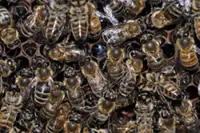WHEN technician Raja Mohd Soffian Raja Ismail came across a beehive in his backyard of his hometown in Raub, Pahang, during the movement control order in 2021, he was intrigued and curious.
Most people would have shivered with fear, but the last thing he did was panic or harm the bees; instead he searched online on how to rescue the bees safely.
Already a subscriber? Log in
Save 30% OFF The Star Digital Access
Cancel anytime. Ad-free. Unlimited access with perks.





